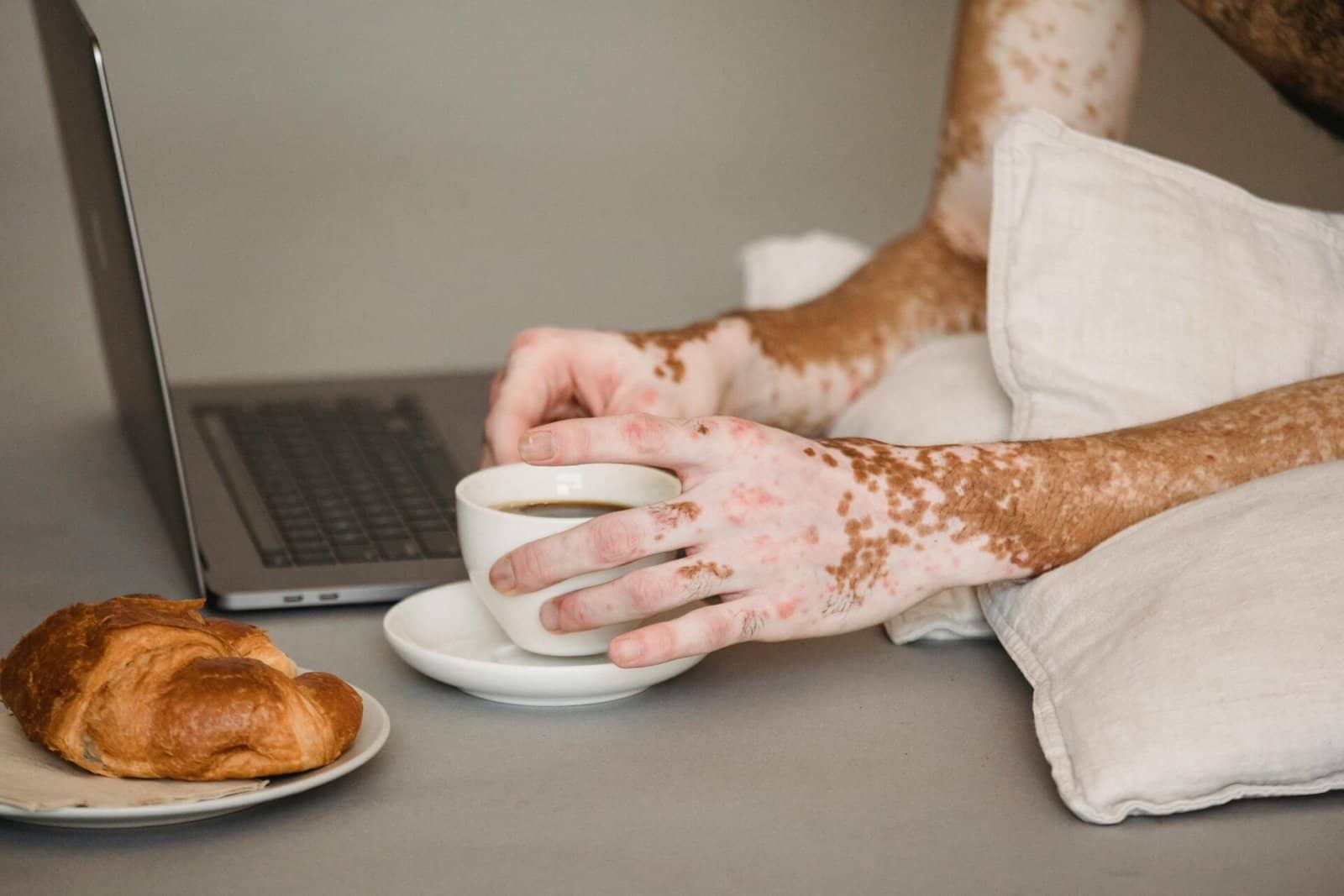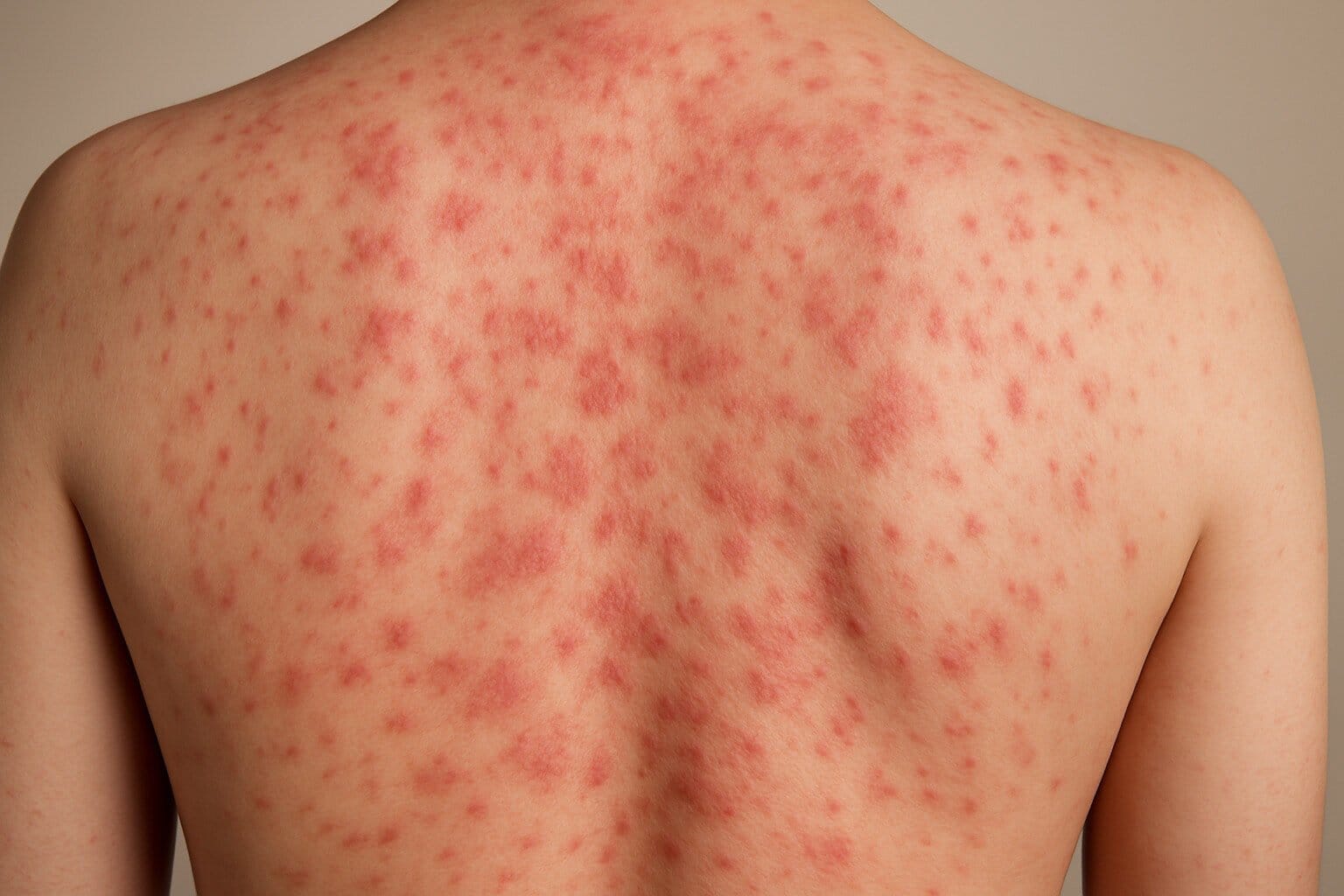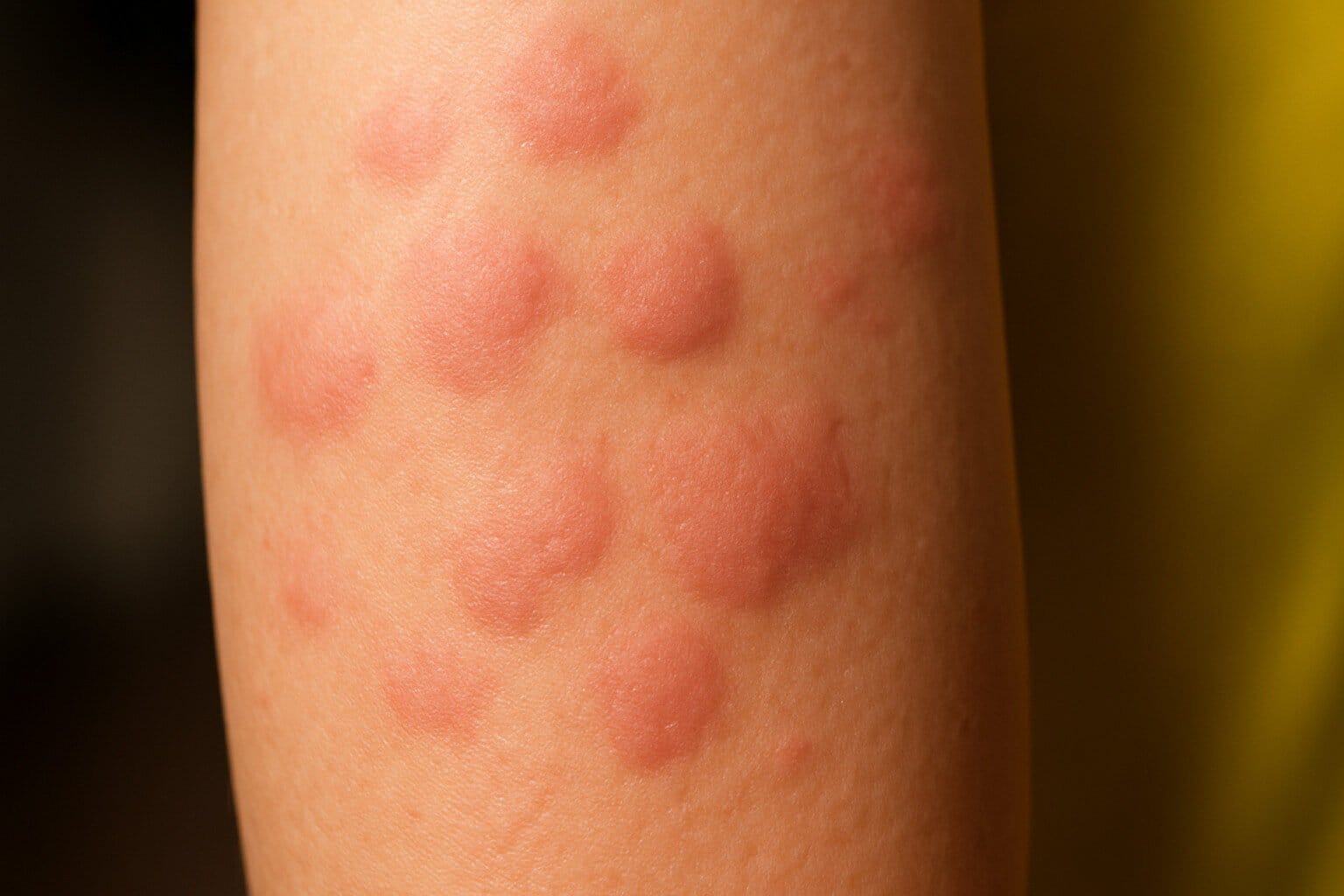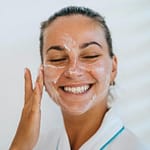Eczema on the Face?: Causes, Risks & Treatments
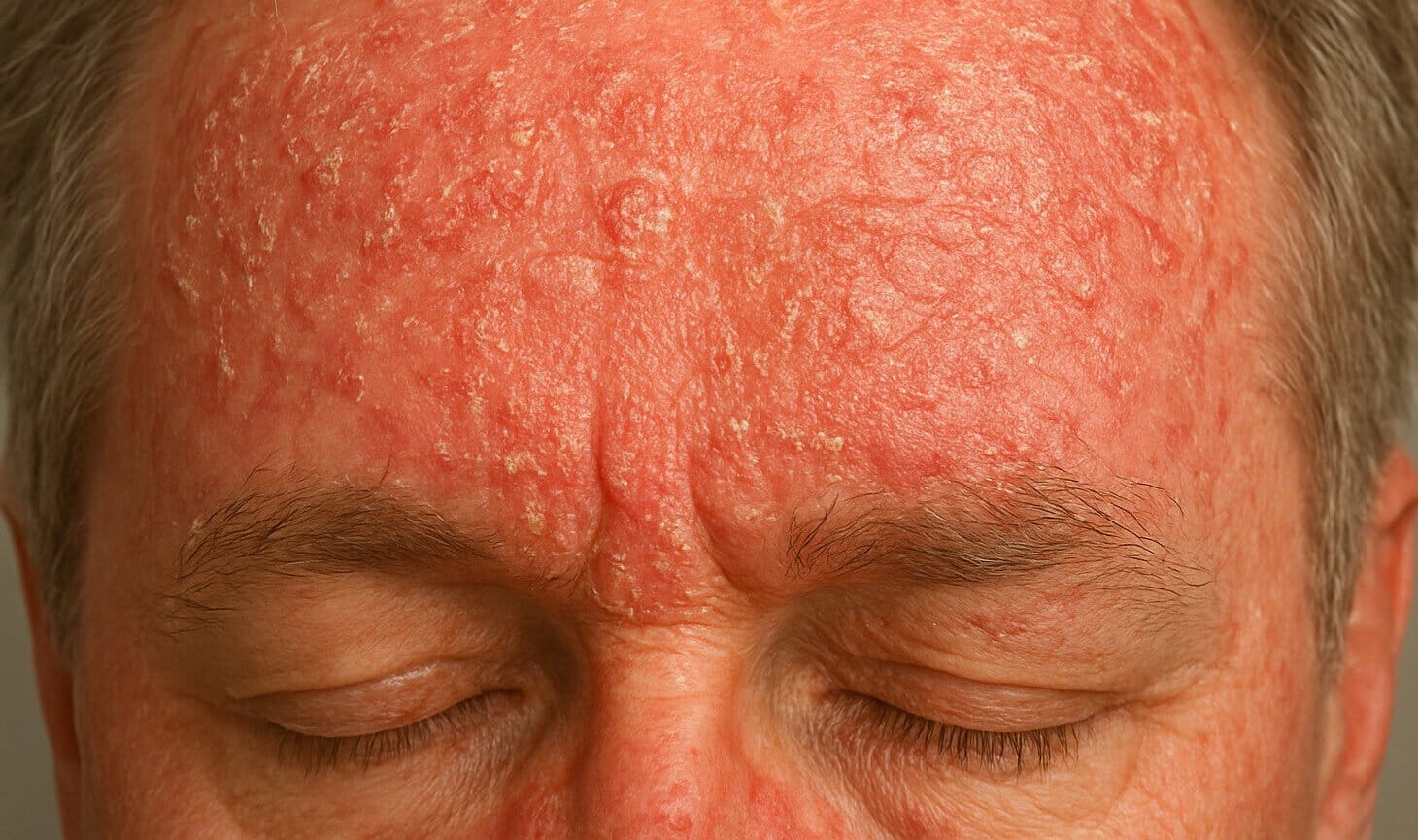
- What is Eczema on the face?
- Why Does it Happen?
- How Does it Form?
- Types
- Myths
- Solutions
- Preventions
- Recommendation
- FAQs
Eczema on the face, also known as atopic dermatitis, is a red, itchy skin condition that makes your cheeks, forehead, or chin feel scratchy and look patchy. For example, it can show up before a big day, like a school dance, a class picture day, a family barbecue, or a friend’s birthday party. This condition feels uncomfortable, looks blotchy, and can make you shy about your face in front of classmates or friends. Moreover, it can get worse or come back often if you don’t know what’s causing it. Eczema isn’t dangerous, but it’s really annoying, especially when you want to look your best for a special event like a school talent show. However, you can manage it with simple, gentle tricks at home. This article explains what facial eczema, or atopic dermatitis, is, why it happens, and its risks. Additionally, it covers how it forms, different types, myths you should avoid, and easy ways to treat and stop it from coming back. Furthermore, we include practical tips and answer common questions to help you get calm, clear skin. Therefore, this guide will help you feel confident, keep eczema away, and enjoy your day without worrying about itchy patches.
What Is Eczema on the Face?
Eczema on the face, also called atopic dermatitis, is a skin condition that causes red, itchy, dry patches on places like your cheeks, forehead, chin, or around your eyes. Unlike pimples, which are small and stay in one spot, eczema spreads over larger areas and feels super scratchy or rough. For instance, it might appear after using a new face wash, wearing a wool scarf, or during cold, dry weather. It looks like scaly, red spots, rough patches, or tiny bumps that itch a lot. Moreover, anyone can get it, not just kids your age. Things like allergies, stress, or harsh soaps can trigger it. For example, it often shows up where your skin is sensitive, like around your mouth, nose, or eyelids. However, it can appear on other parts of your face, like your jawline or temples. By learning what causes facial eczema, you can control it better. Therefore, this guide gives you tools to handle atopic dermatitis, make your face feel smooth, and keep it looking clear and healthy.
Why Does It Happen?
Eczema on the face, or atopic dermatitis, happens when your skin gets irritated or inflamed, often from allergies, sensitive skin, or outside triggers. Your skin acts like a shield, but certain things can make it mad and cause a flare-up. For example, using a new face cream with strong smells, touching pollen from flowers in the school garden, or eating foods like dairy, eggs, or nuts can trigger it. Additionally, cold or dry weather, like in winter, stress from an art project deadline, or dust mites in your pillow or blanket can cause eczema. Bacteria or fungi, like from wearing a sweaty hat after gym or using a dirty towel, can make it worse. Moreover, some kids get it from soaps with harsh chemicals, makeup, or pet fur from cuddling a friend’s dog or cat.
Furthermore, if your family has allergies or eczema, you might be more likely to get it too, because atopic dermatitis often runs in families. For instance, stress from a school play, a tough math test, or a busy week can make your skin more sensitive, leading to flare-ups. Harsh face washes, not rinsing off sweat after soccer practice, or not drinking enough water can irritate your skin and cause dryness. Also, some medicines, like antibiotic creams or cold pills, might trigger skin reactions in some kids, making their face red or itchy. Therefore, knowing these causes helps you figure out what’s making your skin flare up and how to avoid those triggers to stop eczema before it spreads across your face.
How Does It Form?
Eczema on the face, also known as atopic dermatitis, forms when your skin’s protective layers get irritated or damaged, letting redness and itchiness take over. Your skin has a barrier that keeps out germs, dirt, and other stuff. Sometimes, things like harsh soaps, cold air, or allergens, like pet fur, pollen, or dust, weaken this barrier and cause trouble. For example, using a scented lotion, rubbing your face with a rough washcloth, or touching grass during a school picnic can start it. This irritation causes redness, itching, or dry, scaly patches, forming eczema. Unlike acne, which stays in one spot, eczema covers bigger areas, like your cheeks, forehead, or around your eyes, and feels rough or flaky.
Additionally, scratching makes eczema worse, letting germs in and causing more irritation or even infections. For instance, scratching a patch on your chin after a flare-up can make it redder, sore, or crusty. Dry skin, like during winter months, or sweat from playing basketball can weaken your skin’s protection, making it easier for eczema to form. Moreover, allergens like dust mites or stress from a busy school week, like preparing for a science fair, can trigger inflammation in your skin. This process, irritation, a weak skin barrier, and sometimes germs, creates facial eczema. Therefore, knowing how it forms helps you keep your skin calm, avoid triggers, and stop those itchy, red patches from spreading.
Types
Eczema on the face, often called atopic dermatitis, comes in different types, and other rashes can look a bit like it. Here are the main kinds you should know about:
- Atopic Dermatitis: The most common type of eczema, also known as atopic dermatitis, causing red, itchy, dry patches. For example, it shows up on cheeks, around eyes, or on your forehead during a flare-up, often in kids with sensitive skin.
- Contact Dermatitis: Rashes from touching irritants, like strong soap, or allergens, like perfume in face cream. For instance, it appears after using new makeup or a scented sunscreen on your face.
- Seborrheic Dermatitis: Scaly, greasy patches, often near your nose, eyebrows, or scalp line on your forehead. Moreover, it’s common in oily areas and can look yellowish or flaky.
- Hives: Raised, itchy welts from allergies, like to foods or pet fur. They’re not true eczema but can look similar, like after eating shrimp or petting a new puppy.
Each type needs different care to heal properly. Atopic dermatitis and contact dermatitis often improve with gentle home care. However, seborrheic dermatitis or hives might need a doctor’s help if they don’t go away or keep coming back. Therefore, knowing your eczema type helps you pick the right way to treat it and keep your face feeling comfy and looking clear.
Myths
There are lots of wrong ideas about facial eczema, or atopic dermatitis, that can mix you up. Therefore, let’s clear up some common myths to set things straight:
- Myth 1: Facial eczema comes from dirty skin. Nope! Allergies, dry skin, or irritants like soap cause atopic dermatitis. However, not washing your face can make it worse by trapping dirt or sweat.
- Myth 2: Scratching eczema makes it heal faster. Wrong! Scratching spreads irritation and germs, making patches bigger, redder, or even infected.
- Myth 3: Only kids get facial eczema. Not true! Kids get atopic dermatitis a lot, but adults can too. For example, stress or new skincare products trigger it in grown-ups.
- Myth 4: Toothpaste fixes facial eczema. No way! Toothpaste irritates your skin and makes atopic dermatitis worse, not better. Instead, use gentle creams made for skin.
- Myth 5: Food doesn’t cause eczema. Actually, allergies to foods, like dairy, eggs, or nuts, can trigger flare-ups of atopic dermatitis in some kids, making their face itchy.
Thus, fixing these myths helps you focus on real ways to stop facial eczema instead of trying things that don’t work or make your skin itchier.
Solutions
Treating eczema on your face, or atopic dermatitis, at home takes gentle care to calm your skin and stop the itching or burning. Try these ideas to get started:
- Gentle Washing: Wash your face twice a day, morning and night, with a mild, fragrance-free soap labeled “non-comedogenic.” For example, it won’t irritate your skin or clog pores. This cleans away dirt and sweat without drying out your face, like after a day at school or playing outside in the park.
- Soothing Creams: Use a cream with 1% hydrocortisone to reduce itching and redness. Dab a tiny bit on eczema patches once a day, but always ask a parent first to make sure it’s safe.
- Natural Fixes: Try these home remedies to help your skin feel better:
- Aloe Vera Gel: Apply fresh aloe vera gel to eczema patches before bed. It cools and soothes itchy skin, like a calming bandage while you sleep, perfect for flare-ups.
- Cold Compress: Press a cool, damp cloth on itchy patches for 10 minutes, two times a day. It reduces swelling and feels good on sore, irritated skin, like after a hot day.
Do these steps carefully, and you might see eczema patches improve in a few days. For instance, mild atopic dermatitis often gets better fast with these tricks. However, if patches spread, get painful, or last more than a week, ask a parent to help you see a doctor for stronger treatments, like prescription creams or medicines to control inflammation.
Preventions
Stopping facial eczema, also known as atopic dermatitis, means avoiding triggers that make your skin mad and keeping it happy and protected. Here are some practical tips to try every day:
- Gentle Moisturizer: Use a fragrance-free, non-comedogenic moisturizer twice a day, morning and night, even if your skin feels okay. This keeps your skin from getting too dry, which can trigger eczema flare-ups, especially in cold or windy weather when your face feels tight or rough.
- Avoid Triggers: Skip scented soaps, makeup, face creams with strong smells, or rough washcloths. For example, wash new scarves, hats, or hoodies before wearing them to remove dyes or chemicals that might irritate your face. Shower right after sweating, like after gym class, soccer practice, or playing tag at the park, to rinse off sweat and allergens that can spark atopic dermatitis.
- Sun Protection: Put on a non-oily SPF 30 sunscreen every day, even if it’s cloudy outside. Sun can irritate your skin and make eczema worse or harder to heal. Choose a sunscreen with zinc oxide if your skin is sensitive to avoid extra redness or itching on your face.
- Eat and Drink Healthy: Drink lots of water to keep your skin hydrated and strong against irritants. Eat fruits, veggies, and whole grains, like apples, carrots, oatmeal, or whole-wheat toast. Avoid foods you’re allergic to, like dairy, eggs, nuts, or shellfish, which can cause eczema flare-ups that look like red, itchy patches on your face.
Keep doing these tips every day to prevent eczema from starting or coming back on your face.
Recommendation
To fight eczema on your face, also known as atopic dermatitis, start with a simple, daily plan that’s easy for kids like you to follow. First, wash your face every morning and night with a mild, fragrance-free soap that says “non-comedogenic” on the bottle. This cleans away dirt, sweat, and germs without irritating your skin. Then, dab a tiny bit of 1% hydrocortisone cream on itchy eczema patches once a day to reduce redness and itching, but always ask a parent before using it to make sure it’s safe. Additionally, try natural fixes, like aloe vera gel or an oatmeal paste, 2-3 times a week to soothe your skin and make patches less red and scratchy. After washing, use a fragrance-free, non-comedogenic moisturizer to keep your skin soft and protected from dryness. Also, put on SPF 30 sunscreen every day to shield your face from the sun, which can make eczema worse or slower to heal.
Next, write down what might cause your eczema in a notebook or phone app, like using scented lotion, eating dairy, petting a friend’s cat, wearing a wool scarf, or sleeping on a dusty pillowcase. Avoid those triggers whenever you can. For example, wash new clothes or bedding before using them, use hypoallergenic pillowcases, and shower right after sports, gym class, or playing outside to rinse off sweat and allergens. Don’t scratch eczema patches, even if they itch a lot, because it can make them worse or let germs in, causing infections. Moreover, eat healthy foods, like fruits, veggies, and whole grains, and drink lots of water every day to keep your skin strong and less sensitive.
FAQs
Q: Does facial eczema, or atopic dermatitis, go away on its own?
A: Some patches might fade in a few days without treatment. However, treating them with gentle care helps them heal faster. See a doctor if they last longer.
Q: Does scratching facial eczema make it better?
A: No, scratching makes atopic dermatitis patches worse and can spread germs, causing infections. Instead, use soothing creams or a cold compress to stop itching.
Q: Can food cause facial eczema?
A: Yes, allergies to foods, like dairy, eggs, or nuts, can trigger atopic dermatitis flare-ups in some kids. Therefore, avoid foods that trigger your skin.
Q: Are all facial rashes eczema?
A: No, some rashes are contact dermatitis, hives, or seborrheic dermatitis. Atopic dermatitis is chronic and itchy, often on cheeks or around eyes.
Q: How long does it take to clear facial eczema at home?
A: Most patches improve in 3-7 days with home care. However, some need a doctor’s help if they don’t go away or get worse.
Q: Can sunscreen cause facial eczema?
A: Harsh sunscreens with fragrances might. Therefore, use fragrance-free SPF 30 labeled “non-comedogenic” to avoid irritating your skin.
Q: Can regular soap help facial eczema?
A: No, regular soap can dry out your skin and make atopic dermatitis worse. Instead, use mild, fragrance-free soap for gentle cleaning.
By learning why facial eczema, or atopic dermatitis, happens and using these simple fixes and tips, you can keep your skin calm, comfy, and free from itchy patches. Stick with your routine, avoid things that cause flare-ups, and be patient, your face will look and feel great!
Subscribe to our newsletter!
